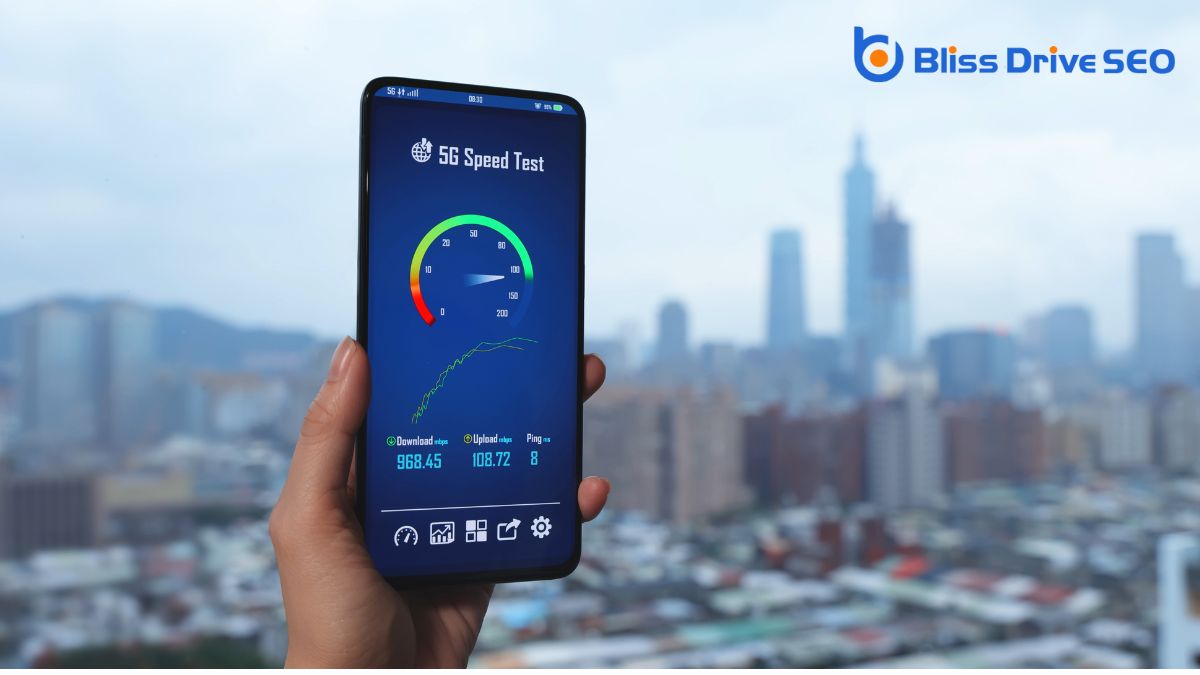Learn More About Us

You're probably wondering how to effectively add SEO to Google and ensure your website stands out. It all starts with understanding the basics of SEO and using Google's tools to your advantage. You'll need to conduct thorough keyword researchThe process of finding and analyzing search terms that people enter into search engines. to pinpoint what your audience is searching for, but that's just the beginning. Once you've got your keywordsWords or phrases that users type into search engines to find information., the next steps involve strategic content creation and monitoring your site's performance. But how does one seamlessly integrate these strategies and keep up with the ever-changing algorithms? Let's explore the essential steps and uncover the secrets of mastering SEO.
To get your head around SEO basics, you need to understand how search engines work and why they matter. Search engines, like Google, scan the web to find and index pages, determining which are most relevant to users' queries. They use complex algorithms to rank these pages, ensuring the most useful content appears at the top of search results.
This is where SEO, or Search Engine Optimization, comes into play. It's about tweaking your website to improve its visibility in these search results, drawing more visitors to your site.
SEO matters because it's a primary driver of organic trafficVisitors who come to a website through unpaid search engine results.. When done right, it helps your site stand out in a crowded online space without paying for ads. You want search engines to see your site as trustworthy and relevant, and that involves optimizing elements like site speed, mobile-friendliness, and quality content.

Understanding the essence of keyword research is crucial for an effective SEO strategy. You need to figure out what terms your audience uses when searching for your products, services, or information. It's not just about picking words at random; it's about knowing your audience's language.
Start by brainstorming potential keywords related to your content and then expand your list using tools like Google's Keyword Planner or Ubersuggest.
When you compile a list, focus on search volume and competition. High search volume indicates popularity but often comes with intense competition. Balance is key. Look for long-tail keywordsLonger, more specific keyword phrases that are less competitive and often more targeted.—these are longer, more specific phrases. They mightn't be as popular, but they attract more targeted traffic and often convert better.
Consider the user's intent behind a keyword. Are they looking to buy, learn, or compare? Understanding this helps you create content that meets their needs.
Don't forget to spy on your competitors. What keywords are they ranking for? Use tools like SEMrush or Ahrefs to see which keywords drive traffic to their sites.
Regularly revise your keyword strategy. Trends change, and so should your approach. Stay updated with the latest search patterns to maintain your SEO effectiveness.
In the field of SEO, on-page optimizationImproving individual webpages to rank higher and earn more relevant traffic in search engines. is where you have the most control. This process involves refining your website's individual pages to improve search engine rankingsThe position at which a website appears in the SERP. and user experience. By focusing on elements within your website, you can directly impact how search engines interpret your content.
Here are three key aspects you should concentrate on:
While on-page optimization establishes a solid base for SEO, creating top-notch content elevates your strategy to the next level. You can't downplay the significance of engaging, informative, and relevant material. Quality content not only attracts visitors but also retains them on your site longer, decreasing bounce rates and signaling to Google that your page is valuable.
Start by identifying what your audience wants to know. Conduct keyword research to discover the questions your potential readers are asking. Once you've compiled a list, develop content that thoroughly and clearly addresses these questions. Don't simply overload with keywords; integrate them naturally within your text to enhance readability.
Consider the structure of your content. Utilize headings, bullet points, and concise paragraphs to make it user-friendly. This assists search engines in comprehending your content more effectively, enhancing your chances of ranking higher.
Quality content goes beyond just text. Include images, videos, and infographicsVisual representations of information, data, or knowledge intended to present complex information qu... to make your content more captivating. Visuals not only break up text but also function as another channel for SEO through alt textDescriptions added to images to help search engines understand the content of images. and descriptions.
Consistently updating your content guarantees it remains relevant, which search engines appreciate. Regularly assess and refresh your posts to maintain their current and valuable status.
Incorporating a mobile-friendly design is essential for boosting your site's SEO on Google. You should optimize responsive elements to guarantee your website looks great on any device, enhance loading speed to keep users engaged and simplify the navigation structure for easy access.
Achieving a mobile-friendly design is vital for optimizing responsive elements on your website. As more users access online content through their mobile devices, it's important to guarantee your site adapts seamlessly to different screen sizes. By optimizing these elements, you can enhance user experience and improve your search engine rankings.
To effectively optimize responsive elements, focus on these key strategies:
To boost loading speed on mobile devices, you need to focus on minimizing assets and optimizing performance. Start by compressing images. Large images can slow your site to a notable extent, so use tools to reduce their size without sacrificing quality.
Next, consider enabling browser caching. This allows returning visitors to load your site faster since elements are stored in their browsers.
Another key step is to minify CSS, JavaScript, and HTML. By removing unnecessary spaces and comments, you streamline your code, making it quicker for browsers to process. Use tools like Google's PageSpeed Insights to identify areas for improvement and gain valuable recommendations.
You should also prioritize above-the-fold content. Load essential elements first so users can engage with your site while the rest loads. This helps keep visitors on your page rather than bouncing due to slow load times.
Lastly, consider using a Content Delivery Network (CDN)A system of distributed servers that deliver content to users based on their geographic location.. CDNs distribute content across various servers worldwide, reducing latency and speeding up load times for users regardless of their location. By focusing on these strategies, you'll enhance your mobile site's performance, creating a better user experience and improving your SEO.
Creating a seamless mobile experience and simplifying your site's navigation structure is crucial for user engagementThe level of interaction and involvement users have with social media content. and retention. You want visitors to easily find what they need without frustration. A cluttered or complex navigation can drive users away, impacting your site's SEO. Here's how you can streamline it:

Speed is the silent catalyst that can transform your website's performance and user experience. Improving site speed isn't just about aesthetics; it directly impacts your SEO. When your site loads faster, visitors are more likely to stay, reducing bounce rates. Search engines, like Google, prioritize these efficient sites, which can boost your rankings.
First, start by optimizing images. Large images slow down your site, so compress them without losing quality. Tools like TinyPNG can help.
Next, enable browser caching, which saves a version of your site on visitors' browsers, so they don't have to reload everything on subsequent visits. This reduces load times significantly.
Consider using a Content Delivery Network (CDN). CDNs distribute your site's content across multiple servers worldwide, ensuring faster access for users regardless of their location.
Also, minimize HTTP requests by reducing the number of elements on your page. Fewer requests mean quicker loading.
Lastly, review and simplify your site's code. Eliminate unnecessary characters, spaces, and comments, known as minifying. This makes your site leaner and faster. Remember, a speedy site doesn't just satisfy search engines; it creates a better experience for your users, inviting them back for more.
To start using Google AnalyticsA web analytics service offered by Google that tracks and reports website traffic., you'll need to set up an account and link it to your website. Once it's set up, you can track your SEO performance by monitoring key metrics like organic traffic and user behavior. This data helps you understand what's working and where you can make improvements.
Beginning on the journey of setting up an analyticsThe systematic computational analysis of data or statistics to gain insights and support decision-ma... account with Google Analytics can transform your understanding of website performance. You'll gain invaluable insights into how visitors interact with your site and make data-driven decisions to enhance user experience and boost SEO. Let's take it step-by-step to make sure you get it right.
Now that you've set up your Google Analytics account, it's crucial to harness its power to monitor your SEO performance. Start by diving into the Acquisition section, where you can see how visitors find your site. Pay close attention to the Organic Search tab. This reveals which search engines are driving traffic and what queries people are using to land on your pages.
Next, check the Landing Pages report under Behavior. This will show you which pages attract the most organic traffic. Understanding what's working well and where you might need to tweak your SEO strategy is vital. Use this data to identify high-performing content and replicate its success.
Don't overlook the Audience Overview. It breaks down user demographics, helping you understand who visits your site. Tailor your content to resonate more with your audience.
An important part of your SEO strategy is building backlinks, as they serve as endorsements for your site's credibility and authority. When other websites link to yours, search engines see it as a sign that your content is valuable and trustworthy. To make the most of backlinks, focus on quality over quantity.
Here are three practical ways to build effective backlinks:
To boost your local presence, start by optimizing your Google My Business profile with accurate information and engaging content.
Use local keywords in your website and content to attract nearby customers searching for your services.
Additionally, build local backlinks by collaborating with community organizations and local businesses.
When it comes to boosting your local presence, optimizing your Google My Business (GMB)A tool for businesses to manage their online presence across Google, including Search and Maps. profile plays an essential role in enhancing visibility. Your GMB profile is the first thing potential customers see when they search for businesses like yours. It's important to make it detailed and appealing. Start by claiming your business profile if you haven't already done so. Once you have control, verify all your information—address, phone number, and hours—is accurate and up-to-date.
Here are three steps to optimize your GMB profile effectively:
Although optimizing your Google My Business profile is essential, using local keywords in your content takes your local SEOOptimization strategies aimed at improving a website’s visibility in local search results. strategy to the next level. By incorporating local keywords, you're signaling to search engines that your business is relevant to users in your area. Start by researching the phrases people in your locale use when searching for services like yours.
Think of specific terms, including neighborhood names, nearby landmarks, and even local slang.
Once you've gathered these keywords, strategically place them throughout your website and content. Include them in your titles, meta descriptions, headers, and within the body of your text. However, don't overstuff your content with keywords; it should still read naturally and provide value to your audience.
Additionally, consider creating content that's specifically tailored to your local community. Write blog posts about local events or news that relate to your business. This not only helps with SEO but also builds a connection with your audience.
Building local backlinks is a powerful way to enhance your local SEO efforts and increase your business's online visibility. When other local websites link back to yours, it signals to search engines that your business is a trusted and relevant part of the community. Here's how you can start building those essential local backlinks:
Building these connections will boost your online presence and establish your business as a local authority, improving your visibility in local search results.
Monitoring and adjusting your SEO strategy is vital for maintaining and improving your website's performance on Google. Once you've implemented your initial SEO tactics, it's invigorating to keep track of how they're performing. Use tools like Google Analytics and Google Search ConsoleA tool by Google that helps monitor and maintain your site's presence in search results.. These platforms provide insights into your website's traffic, user behavior, and keyword performance. By regularly checking these metrics, you can identify what's working and what needs improvement.
Don't just set and forget your SEO. Algorithms change, trends evolve, and your competitors are always optimizing. Review your keyword rankings and make sure they align with your goals. If you notice a drop in rankings, assess the situation. It could be due to increased competition or algorithm updatesChanges made by search engines to their ranking algorithms.. Adapt by rejuvenating your content or exploring new keywords.
It's also important to pay attention to user engagementThe interactions that users have with a brand’s content on social media.. High bounce rates or low dwell times might indicate that users aren't finding what they expect. Consider tweaking your content to better match user intent.
Regularly update your website and keep an eye on backlinks. Disavow any harmful ones that could impact your site's reputation. Remember, SEO is an ongoing process, not a one-time task.
To effectively add SEO to Google, start by grasping the basics of SEO and conducting thorough keyword research. Implement on-page optimization by strategically placing these keywords in your website's content, meta tagsHTML tags that provide information about a web page to search engines and visitors., and URLs. Focus on crafting quality content that meets user intent and keeps visitors engaged. Don't forget a mobile-friendly design, and use Google Analytics for performance tracking. Build backlinks, apply local SEO strategies, and continuously monitor and adjust your tactics based on data insights.
